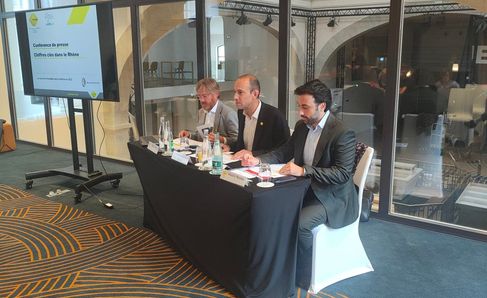The Japanese government had provided more than 1.42 trillion yen (about $ 9.81 billion) in interest-free special loans to help combat the economic impact of the coronavirus pandemic as of September 24 this year, according to the data of the Council. Japan. That’s more than 20 times the total borrowed after the 2008 global financial crisis.
The COVID-19 special loans, whose applications closed on September 30, have supported several million applicants for more than two and a half years, but doubts remain as to whether the assistance is enough to rebuild their lives. It is also unclear how the government will support people in need as loan payments begin in January 2023.
Before the coronavirus spread, support for people in need was provided through the Japanese “welfare fund system”. It was initially aimed at low-income households, but a special provision was added in response to the coronavirus outbreak, and the system was quickly expanded to cover people whose income declined as a result of the pandemic. A senior Welfare Ministry official commented: “We were able to respond quickly using an existing system instead of creating a new one.”
Under the special loan system, the maximum limit of microloans to cover living expenses of troubled families has been increased from 100,000 yen to 200,000 yen (from approximately $ 690 to $ 1,380) and the maximum amount of general support funds for daily use it was increased by 600,000 yen. yen (about $ 4,100) a monthly payment of 200,000 yen for up to three months at 1.8 million yen (about $ 12,400) for a family of two.
As the pandemic was an emergency, the government allowed the self-certification documents to be used as proof of low income and did not strictly require the expected payment times, which were required before the introduction of the new system. An official from Japan’s National Social Welfare Council, which handled the loans, mused: “We were able to act quickly with a single notice from the welfare ministry.”
From the start of the special loans in March 2020 to September 24 of this year, the total loans reached approximately 1,424,200,000,000 yen. In total, approximately 3.34 million of special loans were granted, of which 1.61 million of microloans and 1.73 million of general support loans.
During the three years of the so-called “Lehman crash” (from fiscal year 2009 to fiscal 2011) following the collapse of the US investment bank Lehman Brothers, the Japanese government provided special loans for 70.7 billion yen (490 Millions of dollars). As the economic crisis has mainly affected the manufacturing sector, it is not possible to make a simple comparison, but this time the amount was about 20 times higher.
One factor that dictated the total was a 10-fold extension of the loan application deadline along with waves of COVID-19 infections. A Welfare Ministry official revealed: “Initially there was talk within the ministry last spring about stopping special loans, but contagions were spreading and the prime minister’s office put an end to it. Given that the (loan suspension) measure would affect low-income households, we have been more cautious with the decision than the special measures on employment adjustment subsidies (covering part of corporate benefits for workers on leave). “.
However, in a recent decline in coronavirus infections, the number of loan applications dropped and Health Minister Katsunobu Kato announced at a press conference on Sept. 26 that special loans would be settled at the end of the week of that month. arguing that it was necessary to go back to “a normal way”.
However, due to the lingering effects of the pandemic, some people have gone bankrupt even after taking out the special loans.
A 31-year-old woman from Osaka prefecture who lives with her husband and young daughter is one of them. She used to work as a masseuse, but her number of clients decreased during the pandemic and she later found out she was pregnant. Her shifts were cut in half and her income dropped from 250,000 yen (about $ 1,730) per month to just 150,000 yen (about $ 1,000).
Her husband was unemployed at one point, and although he tried to keep the cost of meals at 500 yen a day, he couldn’t even put together the 1,000 yen he needed to visit a gynecological clinic. She started using government microloans in June 2021 and in January of this year she had borrowed 1.25 million yen.
He could live normally, but since the clients were still far away, he lost his job. It was hard to find another while she was pregnant, and the only other income she had was between 10,000 and 20,000 yen (about $ 70 to $ 140) a month from part-time work. The 130,000 yen (about $ 900) a month that her husband brought to her home supported her family.
Special loans do not need to be repaid if the house is exempt from the tourist tax, but the woman says this does not apply to her. Combined with a credit card loan of around 1.48 million yen (about $ 10,200), the woman’s debt soared to about 2.73 million yen ($ 18,900) and she filed for bankruptcy in July of this year. year.
The bankruptcy rate among those who received special loans is unknown, but according to the Tokyo Social Welfare Board, at least 1,247 people in Tokyo have filed for bankruptcy.
https://mainichi.jp/english/articles/20221001/p2a/00m/0na/018000c
Category: Japan


